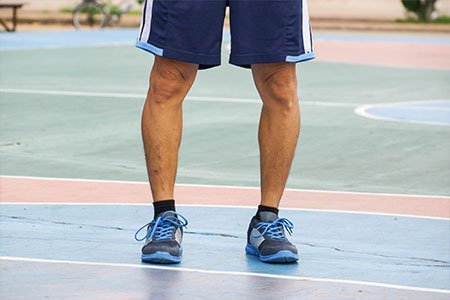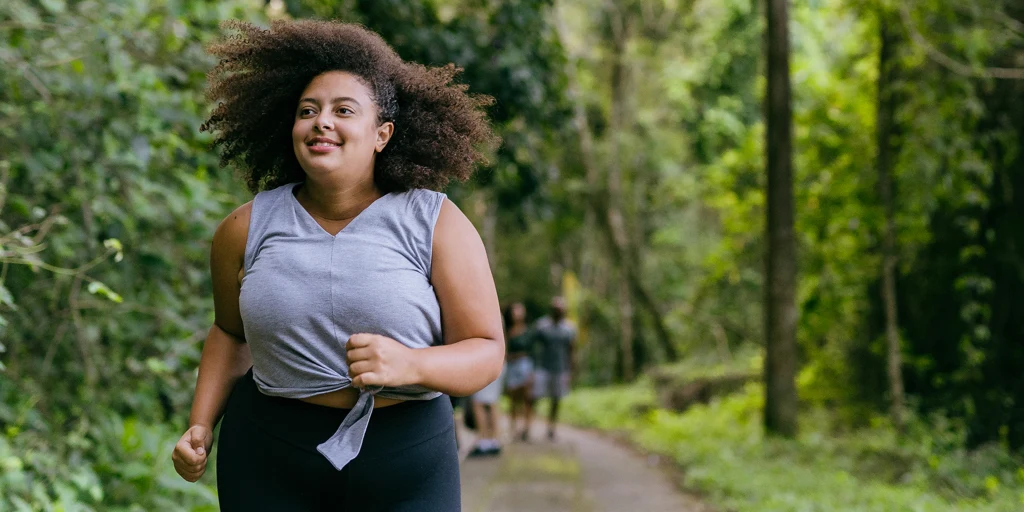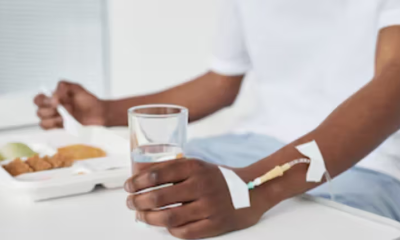Health
How to straighten your bow legs in 3 steps

Bow legs, known medically as genu varum, is a condition characterized by outward curving of the legs, creating a noticeable gap between the knees when standing straight.
While it’s more commonly addressed in childhood, many adults also seek ways to correct or improve this condition. Let’s explore effective strategies and exercises aimed at adults looking to alleviate the effects of bow legs.
Understand your condition
Before diving into corrective measures, it’s crucial to understand the cause of your bow legs. Factors range from genetics and untreated childhood bow legs to vitamin deficiencies and bone diseases.
Consulting with a healthcare provider can offer insights into your specific situation and whether corrective surgery is a recommended option.
Strengthen and stretch
Focusing on exercises that strengthen and stretch your lower body can help improve muscle balance and posture, potentially reducing the appearance of bow legs.
Hamstring curls: Strengthening the back of your thighs can support better leg alignment. Use a resistance band or leg curl machine for this exercise.
Calf raises: Strong calves can support the alignment of your legs. Stand on the edge of a step and raise and lower your heels.
Adductor stretches: Stretching the inner thighs can help if tightness in this area is pulling your legs outward. Try sitting with the soles of your feet together and gently pressing your knees down.
- Practice good posture
Improving your overall posture can also help manage bow legs. Pay attention to how you stand and walk, and try to keep your weight evenly distributed. Yoga and Pilates can be beneficial for building core strength and enhancing postural awareness.
2. Consider physical therapy
A physical therapist can tailor an exercise and stretching program to your needs, focusing on improving your leg alignment and reducing the gap between your knees. They can also provide guidance on using braces or shoe inserts, which, in some cases, can help correct bow legs in adults.
3. Surgery: A last resort
For severe cases, surgery might be considered to correct bow legs in adults. Procedures can range from osteotomies (realigning bones) to guided growth surgeries. These options should be discussed thoroughly with an orthopedic surgeon to understand the risks and benefits.
While completely correcting bow legs in adults without surgery can be challenging, implementing these strategies can significantly improve your comfort, mobility, and quality of life.
Remember, every body is unique, and embracing your differences while taking steps to enhance your health and well-being is what truly matters.
Health
5 symptoms and causes of infertility in men

Trying to conceive a child can be an exciting time, filled with hope and anticipation. But for some couples, it can also be a frustrating journey.
If you’ve been trying to get pregnant for a year without success, you and your partner might be facing infertility.
Infertility is a common condition affecting about 1 in 7 couples and it can affect both men and women. We’ll be focusing on male infertility, what to look out for, and the reasons behind it.
Let’s clear something up first: there often aren’t any obvious signs of male infertility. The main indicator is simply the inability to conceive a child after a year of trying. However, there can be some underlying issues that might cause problems. By understanding these, you can have a more open conversation with your doctor and explore potential solutions.
5 Signs that might point toward male infertility
1. Sexual difficulties
This can include problems ejaculating, low semen volume, erectile dysfunction (trouble getting or keeping an erection), or reduced sex drive. These issues can sometimes be symptoms of hormonal imbalances or other conditions affecting fertility.
2. Testicular issues
Pain, swelling, or a lump in the testicle area can be a red flag.
Healthy sperm production relies on the proper functioning of the testicles, so any abnormalities there might need to be checked by a doctor.
3. Past medical history
Certain medical conditions like undescended testicles (when the testicles don’t move down into the scrotum before birth), infections (including sexually transmitted infections), or surgeries like vasectomy (a procedure for permanent birth control) can impact sperm production or delivery.
4. Lifestyle choices
Habits like smoking, heavy alcohol use, and recreational drugs can all affect sperm quality and count.
Health
Why you’re not losing weight even though you work out

Working out is usually seen as the go-to solution for weight loss. You put in the effort, sweat through the workouts, and expect the scale to show your hard-earned results.
However, many find themselves frustrated when the weight doesn’t come off as expected. This common issue can be disheartening, but understanding why you’re not losing weight despite exercising can empower you to make the necessary adjustments and continue your fitness journey with confidence.
Let’s explore the key reasons why your workout might not be reflecting on the scale.
1. Gaining muscle mass
One of the most positive reasons for not seeing a drop in weight is muscle gain. Muscle is denser than fat and takes up less space in your body. Therefore, as you lose fat and gain muscle, your overall weight might not change, but your body composition is improving. You might notice your clothes fitting better or see more muscle definition.
2. Not drinking enough water
Hydration is crucial for weight loss. Water helps suppress appetite, boosts metabolism, and aids in digestion. When you’re dehydrated, your body might retain water, making you feel heavier. Aim to drink at least half your body weight in ounces of water daily, especially if you’re increasing your fibre intake.
3. Eating more than you burn
Exercise can increase your appetite, and without mindful eating, you might consume more calories than you burn. Even healthy foods can contribute to weight gain if eaten in large quantities. Tracking your calorie intake can help ensure you’re in a calorie deficit, which is necessary for weight loss.
4. Not enough non-exercise activity
Non-exercise activity thermogenesis (NEAT) plays a significant role in weight management. NEAT includes all the movements you do outside of structured exercises, such as walking, cleaning, and fidgeting. If your workouts leave you too exhausted to move much for the rest of the day, your overall calorie burn might decrease. Incorporating more daily movement can boost your NEAT and aid in weight loss.
5. Lack of sleep
Sleep is essential for regulating hormones that control hunger and metabolism. Inadequate sleep can increase levels of ghrelin, the hunger hormone, and decrease levels of leptin, the hormone that makes you feel full. This imbalance can lead to increased appetite and weight gain. Aim for seven to nine hours of sleep per night to support your weight loss efforts.
6. Stress and hormonal imbalances
Chronic stress can lead to elevated levels of cortisol, a hormone that promotes fat storage, particularly around the abdomen. Additionally, certain medical conditions and medications can affect your weight. If you suspect stress or a health issue is hindering your progress, consider consulting a healthcare professional for guidance.
Health
What to eat and avoid when treating malaria

Malaria is a serious disease that affects millions of people around the world. It is caused by parasites transmitted to humans through the bites of infected mosquitoes.
When someone gets malaria, they often feel very sick with symptoms like high fever, chills, headache, and muscle pain. If not treated promptly, malaria can become life-threatening.
However, with proper medical care and attention to diet, patients can recover.
Understanding malaria and its transmission
Malaria is transmitted through the bite of a female Anopheles mosquito infected with Plasmodium parasites.
When this mosquito bites a person, the parasites enter the bloodstream and travel to the liver, where they multiply. After leaving the liver, they infect red blood cells, causing the symptoms of malaria.
Treating malaria
The primary treatment for malaria is antimalarial medication prescribed by a doctor. The type of medication and length of treatment depend on the type of malaria parasite and the severity of the disease. Early diagnosis and treatment prevent complications.
Patients should follow their doctor’s instructions carefully and complete the full course of medication even if they start feeling better.
Foods to eat when treating malaria
Proper nutrition plays a vital role in the recovery from malaria. Here are some foods that can help:
- Fruits and vegetables: Fresh fruits and vegetables are rich in vitamins and minerals that boost the immune system. Oranges, apples, carrots, and leafy greens are excellent choices.
- High-protein foods: Protein is essential for healing and rebuilding body tissues. Include lean meats, fish, eggs, beans, and nuts in your diet.
- Whole grains: Whole grains like brown rice, oats, and whole wheat bread provide necessary energy and fibre, aiding digestion and overall health.
- Hydration: Drinking plenty of fluids is crucial. Water, fresh fruit juices, and coconut water help keep the body hydrated and flush out toxins.
- Soups and broths: Light soups and broths are easy to digest and can be nutritious. Chicken soup, in particular, is beneficial.
Foods to avoid when treating malaria
Certain foods can hinder recovery from malaria and should be avoided:
- Fatty and fried foods: These can be difficult to digest and may cause nausea or discomfort. Avoid fried snacks, heavy sauces, and greasy meals.
- Processed foods: Processed and packaged foods often contain unhealthy fats, sugars, and preservatives that can weaken the immune system.
- Caffeinated drinks: Coffee, tea, and other caffeinated beverages can lead to dehydration, which is not ideal when dealing with malaria.
- Alcohol: Alcohol can interfere with the effectiveness of antimalarial drugs and can also dehydrate the body.
- Spicy foods: Spicy foods can irritate the stomach and should be avoided, especially if the patient is experiencing nausea or vomiting.
Malaria is a serious disease that requires prompt medical treatment and proper care. Along with taking prescribed medication, eating the right foods can significantly aid in recovery.
-

 Health7 days ago
Health7 days agoWhat to eat and avoid when treating malaria
-

 Politics1 week ago
Politics1 week agoSenator Monguno replaces Ndume as Senate Chief Whip
-

 World1 week ago
World1 week agoComputer scientist claiming invention of Bitcoin faces criminal investigation in UK
-

 Celebrities1 week ago
Celebrities1 week agoMohbad’s wife claims Joseph Aloba is her son’s greatest enemy
-

 Politics1 week ago
Politics1 week agoAppeal court affirms Douye Diri as Bayelsa governor
-

 Politics1 week ago
Politics1 week agoActress Hilda Dokubo suspended as Labour Party’s Rivers chairperson
-

 Politics1 week ago
Politics1 week agoOndo LP Governorship candidate, Dr Ayodele Olorunfemi promises ₦120k minimum wage if elected
-

 Entertainment1 week ago
Entertainment1 week agoRema’s ‘HEIS’ sets record for biggest opening week on Spotify Nigeria in 2024


















